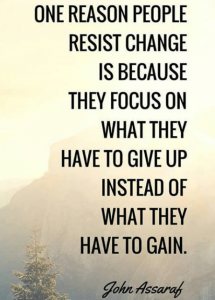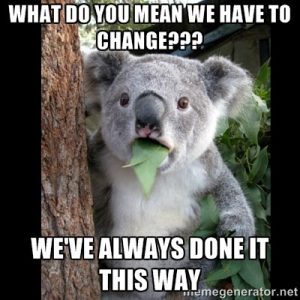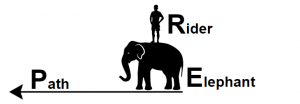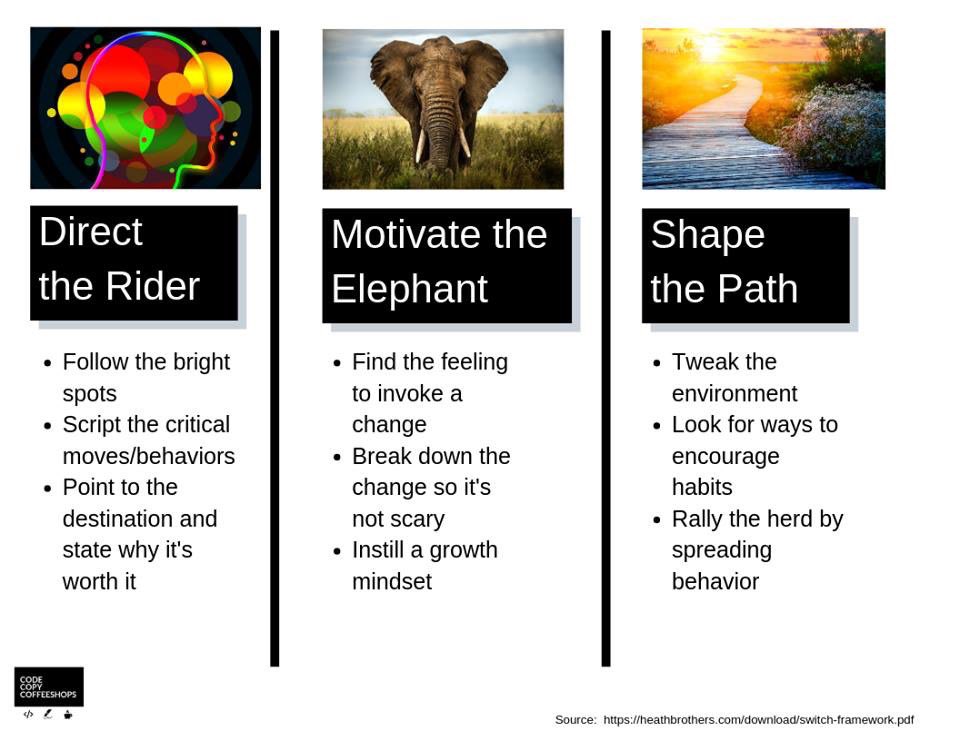Module 1: Integration of shelter medical and management teams for a collaborative healthcare program
What is Change and Why is it Hard?
Many times, solving problems requires making changes in a shelter policy or protocol. A change is the project, initiative or solution put forth to improve the way work gets done, solve a problem, or take advantage of an opportunity.

 Change is hard because it implies loss of something familiar and the replacement may be outside the comfort zone for many. Dr. Grace Hopper, a computer language pioneer and US Navy Rear Admiral, once said that the most damaging phrase in the English language is “We have always done it this way”, implying “Why should we change?”
Change is hard because it implies loss of something familiar and the replacement may be outside the comfort zone for many. Dr. Grace Hopper, a computer language pioneer and US Navy Rear Admiral, once said that the most damaging phrase in the English language is “We have always done it this way”, implying “Why should we change?”
People resist change because they are unsure – they don’t know why the change is being made, the consequences of not making a change, and how the change will impact them. If the change means a significant disruption to the way things have been done or is dependent upon adding work to already packed days, there will be little buy-in.
The Elephant, the Rider, and the Path
A successful change is one that delivers its intended benefits. Achieving this success requires leaders who inspire people to accept and adopt the change. Successful change only takes place when the players feel a deep connection to the idea. They must see it as necessary for the greater good and something that benefits them.
 In “Switch: How to Change Things when Change is Hard”, the Heath Brothers use the analogy of the “Rider”, the “Elephant”, and the “Path” as the 3 critical elements that must be addressed for successful change.
In “Switch: How to Change Things when Change is Hard”, the Heath Brothers use the analogy of the “Rider”, the “Elephant”, and the “Path” as the 3 critical elements that must be addressed for successful change.
The Rider represents our rational side and the Elephant represents our emotional side. The Rider is the planner and the Elephant is the do-er. Perched atop the Elephant and holding the reins, the Rider tries to guide the Elephant, but whenever the Rider and Elephant don’t agree on where to go, the Rider cannot control the 6-ton Elephant. Changes often fail because the Rider simply can’t keep the Elephant on the Path long enough to reach the destination.  Successful change requires the Rider to find a way to harness the Elephant’s emotion-fueled drive and energy to stay on the Path for change. The Rider provides the planning and direction, and the Elephant provides the energy and movement.
Successful change requires the Rider to find a way to harness the Elephant’s emotion-fueled drive and energy to stay on the Path for change. The Rider provides the planning and direction, and the Elephant provides the energy and movement.
Watch This
An introduction to the concepts of Switch (7:58).
For a successful change to occur, you’ve got to direct the Rider, motivate the Elephant, and shape the Path. If you can do all 3 at once, dramatic change can happen even if you don’t have lots of power or resources behind you. In the Intro Chapter to “Switch”, the Heath Brothers provide fascinating real-life stories that illustrate how the Rider and the Elephant must work together to follow the Path to successful change.
1. DIRECT THE RIDER
The Rider or rational part of our mind has great strengths and an important role to play – it’s the thinker, planner, and pathfinder for the change. The Rider must be directed for change to take place. How is this done?
- What should change? Find the Bright Spots. Find what’s already working well and why it is working well. Extract from this and build on it.
- How do we make the change? Script the Critical Moves. Provide crystal-clear directions about exactly where to go and what needs to be done to get there. This is the Path.
- What is the change? Point to the Destination. Change is easier when you know where you’re going and why it’s worth it.
2. MOTIVATE THE ELEPHANT
How do you motivate the 6-ton emotional Elephant? Use these 3 strategies to get the Elephant excited about moving along the Path:
- How do people feel about the change? Find the Feeling. Knowing something isn’t enough to cause change. Make people feel something good and exciting about the change. Appeal to their emotions.
- When do we start the change? First, Shrink the Change. Big changes can be demoralizing and scary, especially to the emotional Elephant. Break down the change into smaller parts until it no longer spooks the Elephant. Find a way for early small wins to reward progress.
- Will people accept the change? Grow your People. Find something in the change that makes each person feel strong and empowered and an owner of the change.
3. SHAPE THE PATH
How we react to change is shaped by the environment or situations we are in. To get people to accept change, we can provide clear direction and motivation, or we simply provide an easier path to follow using these 3 strategies:
- How do you keep the change going? Tweak the Environment. Look for bottlenecks in the path for change and find ways to remove them.
- What will keep the change going? Build Habits. The Rider and Elephant will work together on a change when the tasks become habit.
- What else can be done to keep the change going? Rally the Herd. People follow the lead of others that are enthusiastic about and embrace the change. This behavior is contagious. Help it spread.
Watch This
Video review for the book Switch by Chip and Dan Heath produced by Callibrai (7:55).
Test Your Knowledge


